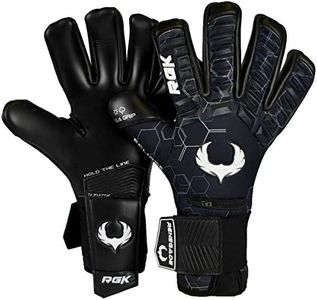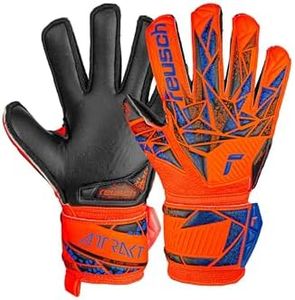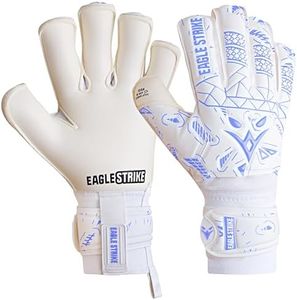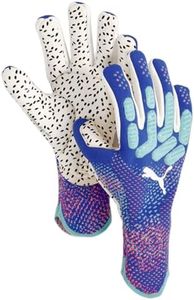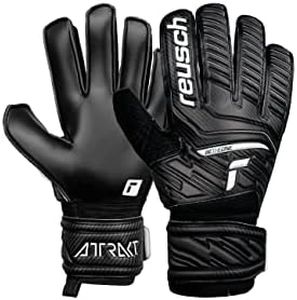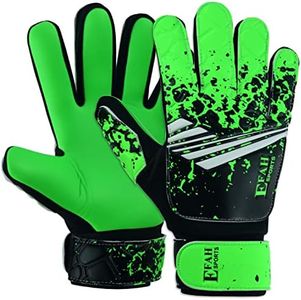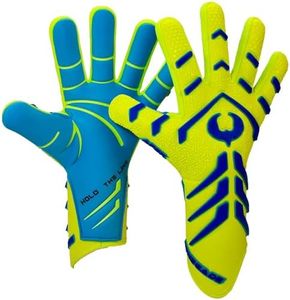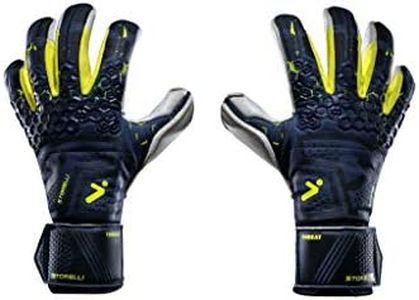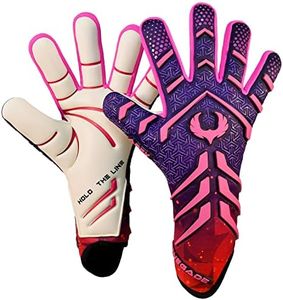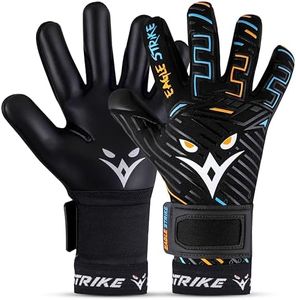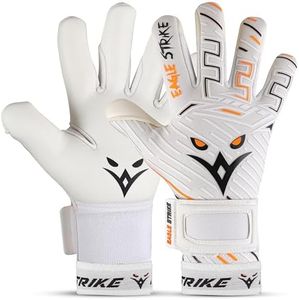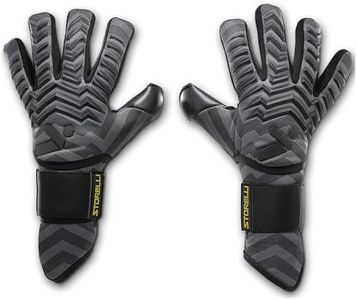We Use CookiesWe use cookies to enhance the security, performance,
functionality and for analytical and promotional activities. By continuing to browse this site you
are agreeing to our privacy policy
10 Best Goalie Gloves
From leading brands and best sellers available on the web.Buying Guide for the Best Goalie Gloves
Choosing the right goalie gloves is crucial for both comfort and performance on the field. The best pair will depend on your playing style, the conditions you play in, and your preferences regarding fit and protection. A well-chosen glove will give you confidence, improve your grip, and help prevent injuries. Understanding key glove features will help you narrow down choices to find what will suit your hands and your game the best.GripGrip refers to how well the palm of the glove holds onto the ball. This is mainly determined by the type and quality of latex used. There are grippy, soft latexes that work well in dry conditions and higher-end latexes that even provide control when wet, but may wear out faster. If you play in varied weather, look for gloves labeled for 'all-weather' or 'wet weather' grip. Beginners might prefer more durable latex, even if it's slightly less sticky, while advanced players often choose the best grip they can find for top performance.
CutThe cut is about the way the glove is stitched and how it wraps around your fingers and hand. Common types are flat cut (looser fit, boxy feel), roll finger (fabric rolls around the fingers for snugness), negative cut (seams inside for close fit), and hybrids that combine features. If you prefer a tight, precise fit, negative or roll finger cuts are popular. Players who like a traditional feel or need a bit more room might prefer the flat cut.
Fit and SizeGetting the right fit is essential. Gloves that are too big won’t give you control, while too-tight gloves can be uncomfortable. Sizes are usually given in numbers, and most brands provide sizing charts based on hand measurements. Measure your hand and check the manufacturer’s guide—ideally, there should be a small gap at the fingertips for flexibility, and the glove should feel snug but not pinching. Think about your comfort and the level of finger movement you need.
Protection (Finger Saves)Finger protection systems, often called finger saves or spines, are inserts or structures in the glove designed to prevent fingers from hyperextending backward. If you are worried about finger injuries or have had them before, gloves with finger protection are a good idea. They might feel a little stiffer, which is something to consider if you prefer flexibility. Youth and recreational players often benefit from extra protection, while some advanced players choose lighter, spine-free gloves for feel and maneuverability.
Wrist ClosureThis refers to how the glove secures around your wrist. Options might include Velcro straps, elastic bands, or wraparound closures. A good closure ensures the glove stays in place and offers support. Wider straps or dual-wraps can provide more stability, which helps if you want a secure, tight fit. Choose a closure that you can easily adjust and that feels comfortable for your playing style and wrist size.
DurabilityDurability is about how long the gloves last before showing wear, especially on the palm. Softer latex offers the best grip but wears out faster, while harder latex lasts longer but might have less performance grip. If you play frequently on artificial turf or hard ground, think about choosing gloves made with tougher materials in the palm and fingers. If you use gloves mostly for matches and not regular practice, you can prioritize grip over longevity.
BreathabilityBreathability relates to how well air flows through the gloves, helping keep your hands cool and reducing sweat. Many gloves include mesh or special fabrics on the backhand or sides. If you live in a hot climate or notice your hands get sweaty and uncomfortable, look for gloves that highlight this feature. Proper ventilation can also keep the gloves smelling fresher over time.
